In This Issue
- Senators Promote IoT
- Smart Car Legislation
- Walden Backs NN Fix
- Report from the CEO
- Internet Freedom Act
- Scalable IoT Platforms
- Ultraslim IoT Circuits
- Cellular Connectivity
- Power-Saving Watch
- DoD and IoT Security
- Interoperability Key
- 4 Pillars of Innovation
- Verizon CFO Shammo
- BitTorrent Sync 2.0
- Telecom and Techno
- Real Battle in the IoT
- Coming Events
Senators Resolve to Promote Internet of Things
Excerpted from Broadcasting & Cable Report by John Eggerton
 A group of US Senators has introduced a resolution calling for prioritizing and accelerating the deployment and development of the Internet of Things (IoT), which means broadband connectivity for a host of devices and services.
A group of US Senators has introduced a resolution calling for prioritizing and accelerating the deployment and development of the Internet of Things (IoT), which means broadband connectivity for a host of devices and services.
“The United States is well positioned to lead the world in innovation policy. Our IoT resolution would commit our nation to a national strategy incentivizing the use of new technologies to maximize consumer opportunity and to facilitate economic growth,” said Senator Deb Fischer (R-NE).
“This forward-thinking initiative would call for a modern framework that encourages innovators. By doing so, we can usher in new ideas and solve problems in the years to come.”
The resolution has no force of law, but is instead the “sense of the Senate” on what should happen, though of course only if it passes.
Sponsoring the resolution were Senators Fischer, Cory Booker (D-NJ), Kelly Ayotte (R-NH), and Brian Schatz (D-HI). The resolution follows a February 11th IoT Hearing in the Senate Commerce Committee, of which they are all members.
“As we continue to grow the next wave of connected devices it’s important our policymakers share a vision that supports this evolving ecosystem,” said Consumer Electronics Association (CEA) President Gary Shapiro. Read more…
Smart Car Legislation – A Different Approach to IoT Regulation
Excerpted from JD Supra Report by Tom Randall
 On February 11th, Senators Ed Markey (D-MA) and Richard Blumenthal (D-CT) announced legislation aimed at establishing federal data security and privacy standards for Internet-connected automobiles (“smart cars”).
On February 11th, Senators Ed Markey (D-MA) and Richard Blumenthal (D-CT) announced legislation aimed at establishing federal data security and privacy standards for Internet-connected automobiles (“smart cars”).
This announcement follows a January Federal Trade Commission (FTC) Staff Report recommending generally applicable, technology-neutral data security and privacy regulation for the Internet of Things (IoT), the increasing number of everyday objects connected to the Internet.
The smart car legislation, in contrast, embodies an approach favoring industry-by-industry data regulation.
Prior to announcing the smart car legislation, Senator Markey released a report titled Tracking & Hacking: Security & Privacy Gaps Put American Drivers at Risk.
The report outlines the data security and privacy practices of 16 car manufacturers and makes several findings related to the collection, transmission, and use of driver and passenger data and the security of wireless access points and other vehicle systems.
The report calls for new regulatory standards from the National Highway Traffic Safety Administration (NHTSA) in consultation with the FTC to correct the “alarmingly incomplete and inconsistent” data security and privacy practices. Read more…
Walden Backs Legislative Fix for Network Neutrality
Excerpted from CED Magazine Report by Brian Santo
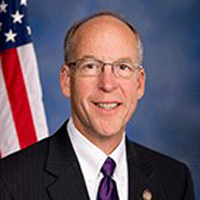 Speaking at the American Cable Association (ACA) Summit, Congressman Greg Walden (R-OR) called the FCC’s decision to reclassify broadband as a communications service subject to Title II of the Communications Act a “total overreach,” adding that the decision was “illogical” and “illegal.”
Speaking at the American Cable Association (ACA) Summit, Congressman Greg Walden (R-OR) called the FCC’s decision to reclassify broadband as a communications service subject to Title II of the Communications Act a “total overreach,” adding that the decision was “illogical” and “illegal.”
Those who oppose broadband reclassification have kept up a steady verbal assault against the maneuver since it was first telegraphed.
The arguments against Title II classification have consistently relied on anti-regulatory and anti-government rhetoric (“overreach,” “illogical,” and “illegal,” along with “onerous” and the like), and on casting the Communications Act of 1934 as out of date.
The ACA has appealed to the FCC for exemptions for its membership, on the basis of concerns that the costs of compliance could be financially crippling for smaller companies. The FCC has often enough accepted this argument as legitimate in the past; it has not with this issue — at least not yet.
Recently opponents have been playing on the right’s naked hostility to President Barack Obama by attempting to characterize FCC Chairman Tom Wheeler as a toady of the Obama White House. Read more…
Report from DCIA CEO Marty Lafferty
 This week, we’re pleased to present the final installment of the DCIA’s Internet of Things (IoT) Marathon webcast, our update on IoT from the distributed computing industry’s perspective, recorded live during the 2015 International CES.
This week, we’re pleased to present the final installment of the DCIA’s Internet of Things (IoT) Marathon webcast, our update on IoT from the distributed computing industry’s perspective, recorded live during the 2015 International CES.
If you missed the Welcome (play-all) or any of the first five flights of video segments covering Smart Objects for Fitness & Healthcare (play-all), Programmable Homes & Energy Management (play-all), Media Entertainment & Social Networking Solutions (play-all), Geolocation Services & Vehicular Automation (play-all), or Retail, Public Space, and Manufacturing Environments (play-all), please click on the preceding links to screen these parts of the webcast.
Today, you’re cordially invited to view the sixth major section of the webcast, entitled Power Consumption, Cybersecurity & Interoperability. Just click here to view the entire episode or click on the links that follow to watch individual segments:
Industry visionary Les Ottolenghi delineates the principal terminology for this major section of the webcast in Defining Power Consumption, Cybersecurity & Interoperability.
IBM Global Consumer Electronics Director Scott Burnett, IoT Industrial Sector Lead North America Ted Connell, and IoT Foundation Product Manager Neil Postlethwaite provide an overview of IBM on Power, Cybersecurity & Interoperability.
ConnectSafely.org President & CEO and industry commentator Larry Magid provides guidance on IoT cybersecurity in ConnectSafely – Common Sense and Education.
911CyberUS Founder Frank Nein provides insights on recent high-profile breaches and offers words of caution for the IoT in 911CyberUS – The Internet of Things Requires Vigilance.
Irdeto VP of Advanced Strategies Stuart Rosove quantifies IoT vulnerabilities and outlines a solution path in Irdeto – The Insecurity of Things and a Path Forward.
Akamai Chief Strategist for IoT portrays the complexity of IoT interoperability and a four-stage process to address it in Akamai – Faster Forward Realizing the Promise of IoT.
Qualcomm’s Director of Product Management Brian Vogelsang demonstrates more than a dozen IoT devices using AllJoyn in Qualcomm – The AllSign Alliance’s AllJoyn.
Fog Lifter CEO Bill Worzel presents the driving factors and several use cases for a fog computing solution to enable the Internet of Things in Fog Lifter – An Integrated System for IoT Interoperability.
And finally, the Denovati Group Founder & Principal Dr. Courtney Hunt closes out the DCIA’s IoT Marathon with a session centering on the human factor in Enterprise Implications of the Internet of Things.
This week’s installment concludes our marathon webcast of thematically-linked video segments and completes our industry update on this vital and important technology movement. Share wisely, and take care.
“Internet Freedom Act” Would Wipe-Out Net Neutrality
Excerpted from Ars Technica Report by Jon Brodkin
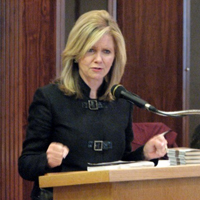 US Congresswoman Marsha Blackburn (R-TN) this week filed legislation she calls the Internet Freedom Act to overturn the Federal Communications Commission’s (FCC) new Network Neutrality rules.
US Congresswoman Marsha Blackburn (R-TN) this week filed legislation she calls the Internet Freedom Act to overturn the Federal Communications Commission’s (FCC) new Network Neutrality rules.
The FCC’s neutrality rules prohibit Internet service providers (ISPs) from blocking or throttling Internet traffic, prohibit prioritization of traffic in exchange for payment, and require the ISPs to disclose network management practices.
These rules “shall have no force or effect, and the Commission may not reissue such rule in substantially the same form, or issue a new rule that is substantially the same as such rule, unless the reissued or new rule is specifically authorized by a law enacted after the date of the enactment of this Act,” the Internet Freedom Act states.
AT&T, Comcast, and Verizon are a bit miffed too. The legislation has 31 Republican cosponsors.
“Once the federal government establishes a foothold into managing how ISPs run their networks, they will essentially be deciding which content goes first, second, third, or not at all,” Blackburn said. “My legislation will put the brakes on this FCC overreach and protect our innovators from these job-killing regulations.”
In the latest election cycle, Blackburn received $25,000 from an AT&T political action committee (PAC), $20,000 from a Comcast PAC, $20,000 from a cable industry association PAC, and $15,000 from a Verizon PAC, according to the Center for Responsive Politics. Read more…
Key to IoT Success: Scalable Computing Platforms
Excerpted from USSourceSecurity Report by Tarik Hammadou, Anthony Laskovski, and Aaron Hector
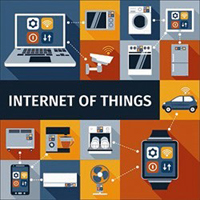 Between flashy PowerPoint presentations from marketing executives and skepticism from information technology (IT) engineers, the Internet of Things (IoT) is poorly understood. It presents both a great challenge and a unique opportunity to develop integrated, intelligent platforms for collecting new forms of data from our everyday environments, be they at work, at home, or on our city streets.
Between flashy PowerPoint presentations from marketing executives and skepticism from information technology (IT) engineers, the Internet of Things (IoT) is poorly understood. It presents both a great challenge and a unique opportunity to develop integrated, intelligent platforms for collecting new forms of data from our everyday environments, be they at work, at home, or on our city streets.
The most significant obstacle to IoT adoption? The inability of today’s popular enterprise systems to interoperate and perform well with distributed, heterogeneous device environments.
The multitude of sensors within a network may not be very “smart” on their own. But if networked in a way that allows them to connect and interoperate seamlessly, the process allows for the emergence of a valuable opportunity: to shift the focus from simple device monitoring to a model in which device data is aggregated via new data-fusion and data-analytics applications.
A true IoT platform is the confluence of Internet, business, and sensory data, the processing of which requires a new generation of technical architecture and analytics.
If properly analyzed, such data can help cities and organizations, both large and small, unlock new, valuable sources. Read more…
Cheap & Ultraslim Circuits Could Make the IoT a Reality
Excerpted from The Guardian Report
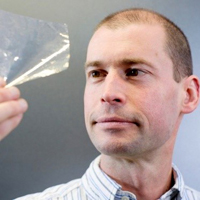 At the end of a long traipse through the supermarket aisles, the phrase “unexpected item in the bagging area” at the self-service check-out has raised the ire of many shoppers.
At the end of a long traipse through the supermarket aisles, the phrase “unexpected item in the bagging area” at the self-service check-out has raised the ire of many shoppers.
In Scott White’s vision for the supermarket of the near future, there would be no irritating interruption, no barcodes to scan, and no check-outs. Instead shoppers would simply load their trolleys and walk-out of a supermarket with wireless technology registering all of the items they have bought from tiny flexible circuits embedded on the food packaging.
It is those small integrated circuits – the equivalent of a silicon chip on a piece of plastic – that PragmatIC Printing, the company which White heads, specializes in. His hope is that the ultra-thin microcircuits will soon feature on wine bottles to tell when a Chablis is at the perfect temperature and on medication blister packs to alert a doctor if an elderly patient has not taken their pills.
“With something which is slimmer than a human hair and very flexible, you can embed that in objects in a way that is not apparent to the user until it is called upon to do something. But also the cost is dramatically lower than with conventional silicon so it allows it to be put in products and packaging that would never justify the cost of a piece of normal electronics,” said White. Read more…
Spark Electron Brings Cheap Cellular IoT Connectivity
Excerpted from by TechHive Report by Paul Lilly
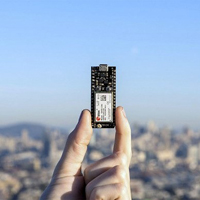 You might be familiar with Spark, a company that’s best known for its Spark Core, an open source Wi-Fi development kit for creating Internet-connected devices.
You might be familiar with Spark, a company that’s best known for its Spark Core, an open source Wi-Fi development kit for creating Internet-connected devices.
It drew considerable interest on Kickstarter as it blew past its funding goal a year ago before yielding to Photon, a spiritual successor with more bells and whistles. Now Spark is back on Kickstarter, though this time it wants to disrupt the cellular space with its Electron development board.
The Electron is a tiny $39 circuit board that you can think of as a cellular-connected Arduino with a SIM card. It also has an ARM Cortex M3 processor, 128K RAM, 1MB of flash storage, and a USB port. Spark says the Electron plays nice with the rest of the Spark family, though the real appeal here is its cellular connectivity.
“We’re surrounded by cellular towers designed for our mobile phones and tablets,” said Zach Supalla, Co-Founder and CEO of Spark. “But those same cell towers can be used for all kinds of products. We hope to bring this technology to the masses and enable a whole new generation of connected products.”
Cellular service can be cost prohibitive, so Spark partnered with un-named carriers so that it could offer contract-free cellular service for connected products. Read more…
Power-Saving Smartwatch Launched by Broadcom
Excerpted from WallStreet.org Report by Jason Sheppard
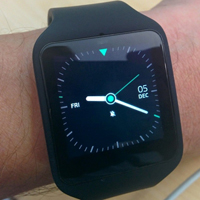 At the beginning of this week, Broadcom launched a power-saving smartwatch program that is compatible with Android. Compared to earlier devices it is able to reduce the usage of power up to as much as 40%.
At the beginning of this week, Broadcom launched a power-saving smartwatch program that is compatible with Android. Compared to earlier devices it is able to reduce the usage of power up to as much as 40%.
The program allows original equipment manufacturers (OEMs) to have enhanced features and bigger batteries which give an improved battery time. This new feature allows devices to connect the GPS with a sensor system.
Also to have wireless charging, camera support system and a processor with an advanced application. Broadcom’s Smartwatch launch has increased the basket of choices for Android Wear product developers because of the quality and affordability.
According to Broadcom, whose platform is now in the testing phase, the program is set to be in the top most list of 2015 smartwatches.
Broadcom sees huge potential not only in the android and tablet sector but also in the automotive sector in devices that are wearable and especially the Internet of Things (IoT). Currently, the IoT is in its teething stages but is all set to be the next big thing in the semiconductor sector. All devices other than computers, androids, and tablets come under the IoT. According to Gartner, the market for IoT is set to increase from an initial 0.9 billion in the year 2009 to 50 billion in 2020. Read more…
Security Concerns as DoD Eyes IoT for New Use Cases
Excerpted from B2C Report by Caron Beesley
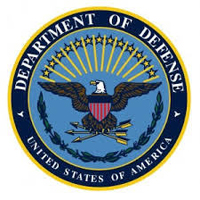 The Internet of Things (IoT) isn’t exactly a new concept, Kevin Ashton coined the term the IoT as far back as 1999. Now, 15 years later, the Department of Defense (DoD) is eager to exploit it.
The Internet of Things (IoT) isn’t exactly a new concept, Kevin Ashton coined the term the IoT as far back as 1999. Now, 15 years later, the Department of Defense (DoD) is eager to exploit it.
Simply put, the IoT refers to the next evolution of the Internet when everyday objects are networked to the web and each other. Smart watches, connected cars, appliances, houses, and more — very soon every physical thing will be accessible through the Internet.
The use cases for IoT are infinite and varied. The GSA, for example, is working with IBM to monitor the energy use of its facilities. Similar sensor devices can be used to monitor jet engines, or any other structure you can think of!
DoD leaders recently gathered at the Technology Training Corporation’s IoT symposium — a 2 day symposium on sensor technologies and their use by government. Several use cases are already underway, as noted by GovWin’s Alex Rossino.
For example, the US Southern Command uses IoT technology in its GeoShare program for humanitarian assistance. GovWin also noted other use cases that the defense establishment is investigating, including: Base Facilities Maintenance — trash pickup, light replacement, food replenishment; Vehicle Management — maintenance prediction, location tracking; Secured. Read more…
Interoperability Is the Key to Industrial IoT
Excerpted from iTWire Report by Stephen Withers
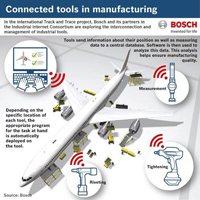 The Industrial Internet is too broad a field for any one organization to cover alone, so cooperation and interoperability is a must.
The Industrial Internet is too broad a field for any one organization to cover alone, so cooperation and interoperability is a must.
The Industrial Internet Consortium (IIC) was founded a year ago by AT&T, Cisco, General Electric, IBM, and Intel, and has since grown to more than 140 members including CSIRO and Telstra.
IIC CTO Stephen Mellor told iTWirethat with an expected 50 billion sensors around the world by 2020, there is a big opportunity for the Industrial Ethernet (essentially the non-consumer side of the Internet of Things) to make a difference.
For example, a 3% improvement in the fuel efficiency of cars would save billions of dollars, and connecting various pieces of hospital equipment can save lives as well as money, he said.
The IIC’s goal is to help make this a reality by building an ecosystem of vendors, promoting interoperability, and providing test-beds to prove interoperability. Mellor’s role is mostly concerned with interoperability.
“We’re not a standards body,” he explained. Rather, the IIC identifies where existing pieces do not fit together and then writes requirements documents that other organizations can use to fill the gaps. Read more…
Four Pillars of Innovation within IoT in One Platform
Excerpted from M2MNow Report by Emil Berthelsen
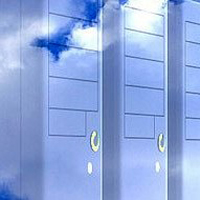 The Internet of Things (IoT) is made-up of four significant pillars of innovation: smarter connected products, cloud service architectures, advanced data analytics, and quicker application development technologies.
The Internet of Things (IoT) is made-up of four significant pillars of innovation: smarter connected products, cloud service architectures, advanced data analytics, and quicker application development technologies.
Each of these innovations has started to contribute to changes in businesses and IT processes. Brought together in one platform, the IoT becomes a market-changing tool for retailers, service providers, consumer electronics OEMs, and system integrators enabling new products and services, delivering new revenue streams, operational efficiencies, and improved customer engagement models.
Enterprises have recognized significant opportunities in the IoT. Smarter connected products are allowing (among others) retailers, service providers, and consumer electronics OEMs opportunities to provide customers with products and integrated services, allowing new business models, creating new and longer customer engagement and promising new revenue streams.
Machina Research forecasts close to 38 billion connected devices by the end of 2023 and we are already well into the growth curve. Enterprises have started to move beyond the smaller trial and proof-of-concept scenarios to exploring and launching significant networked device solutions. Service providers such as ThroughTek are also driving and enabling this rapid growth, managing more than 5 million devices with over 75 million connections per month on their platform. Read more…
Verizon’s CFO Shammo: IoT & OTT Video Will Drive Growth
Excerpted from FierceWireless Report by Monica Alleven
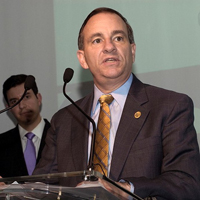 Verizon’s future growth will come from things like the Internet of Things (IoT) and over-the-top (OTT) mobile video – things that some other companies are not even investing in today, the company’s Chief Financial Officer (CFO) Fran Shammo said during an investment conference on Monday.
Verizon’s future growth will come from things like the Internet of Things (IoT) and over-the-top (OTT) mobile video – things that some other companies are not even investing in today, the company’s Chief Financial Officer (CFO) Fran Shammo said during an investment conference on Monday.
“It’s not just going to be about the net adds anymore,” he said at the Morgan Stanley Technology, Media & Telecom Conference 2015. Things like the IoT and products like its “mobile first” OTT video offering due to launch this summer are going to contribute to revenue growth, he said, noting that the IoT is growing almost 45 percent year-over-year. “This is a tremendous growth not only for Verizon, but also for the industry,” he said.
In a session that touched on everything from net adds to Net Neutrality and Google’s upcoming mobile virtual network operator (MVNO), Shammo also made it clear that Verizon is standing behind its ever-important network.
He said there are a lot of claims being made by a lot of people around network quality in the consumer market, and Verizon is trying to send a message about how its network is different. “I think consumers are getting confused about network quality. Really what we’re driving now is to say, ‘don’t settle for less’ because network is important and when you’re going to need it the most, you’re going to want it to be there,” he said. Read more…
BitTorrent Sync 2.0 Brings Pro Version with Selective Sync
Excerpted from Lifehacker Report by Eric Ravenscraft
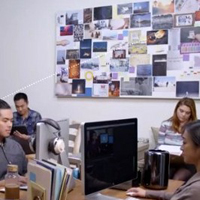 We’ve looked at BitTorrent Sync before as an alternative to Dropbox for sharing large files across your devices. Now, the service has updated to Version 2.0 and with it comes a new Pro tier.
We’ve looked at BitTorrent Sync before as an alternative to Dropbox for sharing large files across your devices. Now, the service has updated to Version 2.0 and with it comes a new Pro tier.
The new Pro tier for BitTorrent Sync costs $40/year, which falls roughly in line with other services like Dropbox or Google Drive (depending on your storage needs, of course, though Sync has no limits). With the Pro version you can make all your files accessible on any device, while only selectively syncing them. You also get improved access controls for sharing files.
Free users can still use the service for up to 10 folders. Because Sync uses peer-to-peer technology for its transfers, there’s no limit to the size or speed of the files you’re allowed to sync. You can also install Sync on NAS systems so you can access your own personal server from anywhere.
BitTorrent Sync uses peer-to-peer file sharing to synchronize your files between computers. When you point the BitTorrent Sync app at a directory on your computer, you share those files with any other computer that you give a secret passcode to. The data only lives on your computer and the computers you share it with (or mobile phones). It’s never uploaded to a third party server like other file syncing programs. Since you data is never uploaded to a server, your storage capacity is only limited to your own hard drive, and no one else has access to your files. Read more…
An Uneasy Relationship Between Telecom & Technology
Excerpted from NY Times Report by Mark Scott
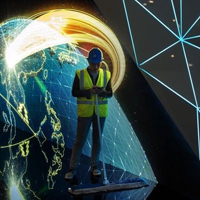 For four days, a sprawling conference center in Barcelona becomes the global hub for the telecommunications and technology industries.
For four days, a sprawling conference center in Barcelona becomes the global hub for the telecommunications and technology industries.
More than 80,000 people — including heavy hitters like Mark Zuckerberg, chief executive of Facebook; Tom Wheeler, Chairman of the Federal Communications Commission; and Vittorio Colao, chief executive of Vodafone — gather to sign contracts and share contacts.
Yet despite the numerous networking events and business deals, there is a love-hate relationship involving some of the world’s largest mobile carriers and tech giants like Facebook and Google.
Both sides rely on each other to provide customers worldwide with high-speed Internet access and online services like music streaming and social networking. Yet as smartphones increasingly become the principal means by which people manage their everyday lives, the telecom and tech giants are jockeying to position themselves as consumers’ main conduit for using the Internet on mobile devices.
“There’s a lot of anxiety,” said Adrian Baschnonga, a telecom analyst at the consulting firm Ernst & Young in London. “No one wants to be overshadowed. Everyone is questioning their role in the industry.” Read more…
The Real Battle in the IoT Is for the Back-End
Excerpted from AdExchanger Report by Allison Schiff
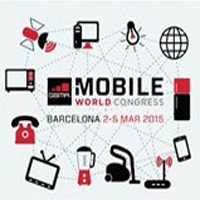 More than 90,000 tech vendors, manufacturers, marketers, agency reps, carriers, analysts, reporters, and sundry members of the C-suite from more than 200 countries descend on Barcelona for Mobile World Congress (MWC) with a single acronym on their lips: the Internet of Things (IoT).
More than 90,000 tech vendors, manufacturers, marketers, agency reps, carriers, analysts, reporters, and sundry members of the C-suite from more than 200 countries descend on Barcelona for Mobile World Congress (MWC) with a single acronym on their lips: the Internet of Things (IoT).
But connected cars, smart washers, chatty fridges, intelligent garage doors, and the latest generation of phone, fitness bands, watches, or other various wearable devices aren’t the real battleground, said former Mediacom Mobile Chief Jon Hook, who moved over to app dev startup Phunware as VP of Mobile in January.
“It doesn’t matter what the big trend is — it’s the simple question of what connects all of these wearables, mobiles, beacons, NFC, and advertising solutions,” Hook said.
“Without that, all you have are great innovation, advertising, and mobile partnerships sitting in isolation. What’s the tech or the software quietly working in the background to connect all of this?”
Samsung, HTC, LG, and Sony are all reportedly unveiling flashy new devices at MWC this year. While certainly cool, announcements like that are more of a distraction than anything, said Neil Sweeney, President and CEO of JUICE Mobile and its beacon network spinoff company, Freckle IoT. Read more…
Coming Events of Interest
Datacloud South East Asia — April 8th-9th in Johor, Malaysia. Datacloud South East Asia will assess the energy, scalability, security, architecture, and software challenges confronting operators of data centers and enterprises engaged in or considering transitions to the cloud.
NAB Show — April 11th-16th in Las Vegas, NV. Popular and fresh attractions for 2015 include the Cloud Pavilion (CP) for asset management; Connected Media Live (CML), focusing on the consumer experience; the Drone Pavilion (DP), featuring a fully enclosed “flying cage” for demonstrations; and the New Media Expo (NMX).
Internet of Things Conference — April 15th-17th in San Diego, CA. The IoT Con will focus on how companies are using a variety of technologies, including ZigBee radios, Wi-Fi, and machine-to-machine (M2M)software, to connect things to the Internet, and how they are achieving real business benefits from doing so.
All That Matters — May 20th-23rd in Singapore. Packed with influencers, content creators, platforms and marketers, ATM drives business and global collaboration for decision makers in the entertainment, media, and marketing industries.
CES Asia — May 25th-27th in Shanghai, China. The success of the 2015 International CES builds strong momentum for CES Asia. With strong exhibitor demand for CEA’s inaugural event, the show will be curated with select qualifying companies permitted to exhibit.
Data Center and Cloud Awards — June 2nd in Monaco. Europe’s most prestigious awards for data center and cloud achievements will be announced at an evening ceremony prior to the opening of Europe’s ‘must-attend’ Datacloud Europe conference and exhibition.
Freescale Technology Forum — June 22nd-25th in Austin, TX. FTF, this year focusing on the Internet of Things (IoT), is the heart of discovery, imagination and innovation. Together we will strategize and design the next market-shifting products.
Internet of Things World Forum (IoTWF) — October (2015 Dates TBD) in Dubai, UAE. IoTWF is an exclusive event that brings together the best and brightest thinkers, practitioners, and innovators from business, government, and academia to accelerate the market adoption of the Internet of Things.
